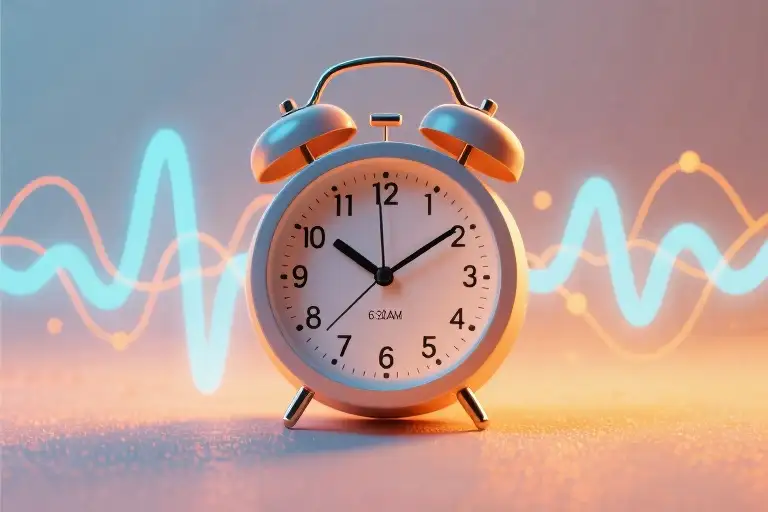There’s a particular kind of magic that happens when the barrier between dreams and reality grows thin. Not the jarring, wake-up-in-a-cold-sweat kind of moment, but those peculiar instances where fragments of your subconscious linger into daylight like the last notes of a song echoing through an empty hall.
I found myself standing in one such moment recently, though it took until mid-afternoon to fully surface. The memory arrived unannounced—a vivid recollection of wandering through an impossible cave where the walls themselves seemed to hum. The acoustics defied physics; every sound fractured into crystalline echoes that rippled through the air like visible soundwaves. And then, without thinking, I began to sing. Not just any singing—the kind where a single voice splits into harmonies, where throat becomes instrument. The cave answered, amplifying and refracting each note until the space vibrated with something primal and perfect.
When I finally told my wife about this midnight concert, her deadpan response—’That explains why you and the dog were having a growl-off at 3 AM’—somehow made the whole thing more real. The dog, for his part, had seemed genuinely invested in our duet, though whether as critic or collaborator remains unclear.
What fascinates me most isn’t just the absurdity of sleep-singing (though my wife would argue that deserves its own study), but how effortlessly creativity flows when freed from waking constraints. That cave didn’t exist, yet my dreaming mind constructed acoustics precise enough to make Tuvan throat singing—a technique I’ve barely mastered—sound transcendent. It makes you wonder: are we all just walking repositories of untapped artistry, waiting for the right dream to set it free?
The Midnight Concert in the Cave
The walls hummed before I even opened my mouth. That’s how I knew this cave was different – not just geological hollow space, but something alive with resonance. Damp air carried vibrations through my bare feet as I stepped forward, each footfall triggering faint harmonic responses from the stone. My fingers trailed along ridges that pulsed like vocal cords, and when I exhaled, the cavern breathed back with perfect pitch.
Then came the singing. Not mine at first – just the cave’s own voice, a low drone that shimmered with unexpected overtones. It sounded like winter wind through frozen reeds, if wind could somehow harmonize with itself. The acoustics transformed simple sounds into layered compositions, bending notes around corners and stacking them like invisible choir lofts.
That’s when the impulse hit. My throat remembered before my mind did – that peculiar tightening just below the Adam’s apple, the tongue positioning I’d practiced after watching Tuvan masters. What emerged wasn’t my normal singing voice, but something split down the middle: a foundational growl supporting a whistling overtone that danced above it. The cave caught both voices and multiplied them, sending back iterations that grew progressively stranger and more beautiful.
I experimented – adjusting my jaw, shaping vowels with my lips while keeping the drone constant. The stone answered each adjustment with its own modifications, creating call-and-response patterns no human choir could replicate. At some point, the physics of it all stopped mattering. My waking mind’s understanding of vocal cords and sound waves dissolved into pure sensation: vibrations in my chest, metallic tastes of particular notes, the way certain frequencies made my scalp tingle.
Time became elastic. Maybe minutes passed, maybe hours – just the eternal present of this sonic feedback loop between biology and geology. The dream-logic held firm: of course my throat could do this, of course the cave would respond this way. Only upon waking would the impossibility of it all dawn on me, but in that moment, everything made perfect sense.
What lingered longest upon waking wasn’t the memory of sounds, but their physical aftermath – a soreness in vocal muscles I didn’t know I had, the ghost of vibrations in my sternum. And, as I’d learn later, some very confused household witnesses to my midnight vocal explorations.
The Canine Duet Reality Check
Reality has a peculiar way of deflating our most sublime moments. That glorious cave in my dream, with its cathedral acoustics amplifying every overtone of my Tuvan throat singing? Turned out to be our modest bedroom at 3 AM, with an unimpressed audience of one human and one very confused border collie.
My wife’s delivery was textbook deadpan when I recounted the dream over breakfast. “So let me get this straight,” she said, stirring her coffee with the precision of a crime scene investigator, “while I was dreaming about finally organizing the pantry, you were headlining at the Cave Echo Festival?” The dog chose that moment to demonstrate his own vocal range with a yawn that somehow morphed into a howl mid-stretch.
What followed was the kind of marital dialogue that never makes it into romance novels:
“You kept doing this… this growl-hum thing,” she demonstrated, producing a sound somewhere between a didgeridoo and a vacuum cleaner choking on a sock. “Then Max would answer with his ‘I think there’s a squirrel in the yard’ bark. Back and forth. All. Night. Long.”
Max, hearing his name, immediately assumed we were discussing his musical talents. He parked himself at my feet and began what can only be described as experimental jazz yodeling – complete with dramatic head tilts between notes. My wife fixed me with the look usually reserved for people who put empty milk cartons back in the fridge. “Your duet partner seems ready for an encore.”
Later, while scrubbing coffee stains off the counter (my penance for nocturnal noise pollution), it struck me how dreams and reality conduct their own strange call-and-response. The same vocal cords that produced those ethereal overtones in my unconscious mind had, in waking life, been reduced to amusing my dog and exasperating my spouse. Yet both versions contained truth – one about artistic yearning, the other about the messy humor of shared lives.
Max, now napping with his chin on my foot, emitted a contented little growl-purr. I like to think it was his review of our nighttime performance: two stars for musicality, five stars for companionship.
The Symphony in Your Throat: Understanding Tuvan Throat Singing
That night in my dream, my voice did something impossible—it split into two distinct pitches that harmonized with themselves. This wasn’t vocal magic but an ancient technique my subconscious remembered: Tuvan throat singing, where one voice becomes an entire natural orchestra.
At its core, throat singing (or khoomei as locals call it) creates a sonic illusion. The singer produces a deep fundamental drone while simultaneously isolating specific overtones—those shimmering high notes you might hear when someone strikes a metal bowl. Through precise tongue and lip movements, Tuvan herders learned to amplify these normally faint harmonics until they sing duets with themselves.
The tradition emerged from practical necessity. On the wind-swept steppes of Tuva and Mongolia, herders developed this technique to:
- Mimic environmental sounds (a gurgling river becomes a bassline, whistling wind turns into melody)
- Communicate across vast distances (the layered frequencies carry farther than normal speech)
- Meditate during long solitary hours with livestock
What fascinates scientists is how throat singers manipulate vocal anatomy. Unlike Western singing that focuses on pure tones, khoomei practitioners:
- Relax their vocal cords to create that signature low growl
- Shape their mouth cavity to filter specific overtones (think tuning a radio between stations)
- Use subtle jaw movements to ‘play’ different harmonics like a human theremin
Modern research reveals why my dreaming brain chose this particular skill. fMRI scans show throat singing activates both the language centers and areas responsible for abstract sound processing—the same regions that light up during musical improvisation. Perhaps my subconscious was composing through a millennia-old vocal technology.
For nomadic cultures, this wasn’t performance but conversation. They’d sing sygyts (whistling style) to answer bird calls, or kargyraa (gutteral) to echo mountain avalanches. My midnight duet with the dog accidentally honored that tradition—two species finding common ground through shared sound.
When Science Meets Dream Magic
That surreal moment when my sleeping brain conjured a concert hall in a cave wasn’t just random neural fireworks. Science suggests our most vivid musical dreams often strike during REM sleep, when the brain’s creative centers light up like festival lanterns. During this phase, the rigid logic of our waking minds relaxes, allowing sounds, images, and ideas to collide in unexpected harmonies.
Researchers at Harvard’s Sleep and Cognition Lab found increased theta wave activity in musicians’ brains during REM cycles – the same waves associated with improvisation and flow states. It’s as if our sleeping selves attend nightly masterclasses in creativity. Paul McCartney famously attributed the melody of Yesterday to a dream visitation, while Sting described entire songs arriving “fully formed” during sleep. My cave concert may not have produced a hit single, but the mechanism was likely similar: a sleeping brain free to experiment with vocal possibilities my conscious mind would dismiss as impossible.
What makes sound-related dreams particularly fascinating is how they bridge physiology and imagination. The same vocal cords that produced those midnight growls (much to my wife’s amusement) physically attempted the throat singing techniques my dream self mastered. Studies show our bodies often mirror dream actions through subtle muscle activations – explaining why sleep talkers articulate words and why my dog became an unwitting duet partner.
This intersection of neuroscience and artistry reveals a profound truth: creativity isn’t purely conscious work. Like Tuvan herders discovering overtones by listening to wind through mountain passes, we sometimes create best when we stop trying. The cave in my dream wasn’t just scenery – it symbolized the hollow spaces in our minds where vibrations of experience transform into something new. Perhaps we all carry such resonant chambers within us, waiting for the right moment to sing back our world’s hidden melodies.
Unlocking Your Vocal Subconscious
The cave in my dream taught me something unexpected: our voices carry hidden dimensions waiting to be discovered. While few of us will stumble upon magical singing caverns, there are simple ways to explore the boundaries of vocal expression right at home. Here’s how to safely awaken your sound-making potential.
Step 1: Preparing Your Instrument
Start by treating your throat like a musician treats their prized violin. Yawn deliberately three times to release tension – not the quick polite yawns we stifle in meetings, but those deep, jaw-cracking ones that make your eyes water. Notice how this creates space in your vocal apparatus. Hum any comfortable note while placing fingertips lightly on your cheeks and forehead. When you feel vibrations dancing under your skin, you’ve found your body’s natural amplifier.
Step 2: Discovering Overtones
Now for the fascinating part. Sustain an “oo” sound (as in “moon”) at moderate volume. Slowly shape your mouth into an “ee” position without changing the pitch. If done correctly, you’ll hear a ghostly second note hovering above your main tone – congratulations, you’ve just isolated your first overtone! This acoustic phenomenon forms the basis of throat singing. Don’t worry if it takes several attempts; even Mongolian masters compare the technique to “catching sunlight in your hands.”
Step 3: Creating Your Echo Chamber
Bathrooms transform anyone into an instant vocal artist. The hard surfaces and right angles mimic my dream cave’s acoustics. Try standing near the shower tiles while practicing vowel modulations. For adventurous souls, empty closets or stairwells become impromptu resonance labs. Record these experiments on your phone – you might capture unexpected harmonies even your conscious mind couldn’t plan.
A word of caution: these explorations should feel like stretching sleepy muscles, not athletic training. Limit sessions to five minutes initially. If your larynx feels scratchy or tired, drink warm honey lemon water and rest for 24 hours. Remember, the goal isn’t perfect technique but joyful discovery – much like my dog who happily howls along without caring about musical rules.
Tonight before sleep, try this ritual: hum your overtone experiment very quietly, just loud enough to feel vibrations in your pillow. You might invite intriguing new visitors to your dreamscape. Who knows? Your subconscious could be preparing its own midnight concert series.
When Dreams Sing Back
Perhaps every dream is a song our subconscious writes for us—a melody woven from the fragments of our waking hours, waiting to echo through the caverns of our minds. That night, my subconscious had composed a duet between Tuvan throat singing and a mysteriously resonant cave, blurring the line between imagination and reality so thoroughly that even our dog became an unwitting backup vocalist.
This peculiar intersection of dreams and music isn’t unique. History brims with artists who’ve woken clutching melodies from their sleep—Paul McCartney’s Yesterday emerging fully formed from a dream, or Tartini’s Devil’s Trill sonata whispered by a phantom violinist in his nightmares. Science suggests our sleeping brains become improvisational composers, remixing daily sounds into new arrangements during REM cycles. My cave concert was simply one variation on this ancient theme.
What makes these nocturnal concerts remarkable isn’t their strangeness, but their invitation to listen differently. That half-remembered dream reminded me how often we ignore life’s accidental music—the rhythm of windshield wipers syncing with car radio beats, or the harmonic hum of subway brakes. The Tuvan herders understood this when they developed throat singing to mimic wind through mountain passes and rivers carving steppes. Their art turns the body into an instrument for duetting with the world.
Your dreams might not feature overtone harmonics (though if they do, please share—#DreamSoundtrack awaits), but they likely contain equally fascinating soundscapes. That snippet of conversation replaying as you shower? Your brain composing dialogue for tomorrow’s meeting. The phantom alarm tone you swear you heard at 3 AM? An auditory memory tuning itself. These are the raw materials of your subconscious creativity.
Here’s an experiment: Tonight, place a notebook by your bed. When you wake, capture any musical fragments before they dissolve—a rhythm, a nonsense lyric, even just the quality of silence in your dream. Over time, you’ll assemble a playlist of your sleeping mind. And if you’re feeling adventurous, try the #BathroomEchoChallenge: Sing a sustained note in your shower while slowly shaping your mouth to filter specific overtones. You might not achieve full Tuvan resonance, but you’ll glimpse how ordinary spaces can transform ordinary sounds into something extraordinary.
What song did your subconscious sing you last night? The answer might be sillier than throat singing with canines, more profound than any concert hall, or simply a quiet reminder that creativity never truly sleeps—it just waits for us to listen.





